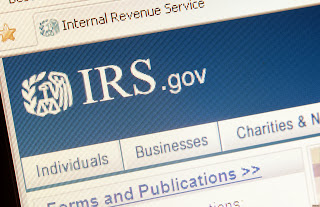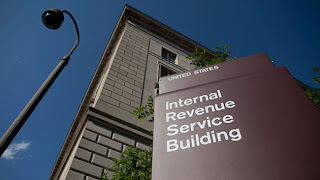The holidays are over. New Years has come and gone. Now, of course, it's time to get ready for - cue the Andy Williams' music - "the most wonderful time of the year." Tax time!
 What? You mean you prefer the holiday season over the tax season? Shocking… or not so much. Unfortunately, while most people wouldn’t mind turning back the calendar a few months and having a second Thanksgiving or other celebratory day, the fact of the matter is here we are in 2014 and it’s time to prepare for the annual rite of passage that is “The filing of the tax return.” To help make that task a little easier this year, here are 3 simple, but key tips to keep in mind.
What? You mean you prefer the holiday season over the tax season? Shocking… or not so much. Unfortunately, while most people wouldn’t mind turning back the calendar a few months and having a second Thanksgiving or other celebratory day, the fact of the matter is here we are in 2014 and it’s time to prepare for the annual rite of passage that is “The filing of the tax return.” To help make that task a little easier this year, here are 3 simple, but key tips to keep in mind.
 What? You mean you prefer the holiday season over the tax season? Shocking… or not so much. Unfortunately, while most people wouldn’t mind turning back the calendar a few months and having a second Thanksgiving or other celebratory day, the fact of the matter is here we are in 2014 and it’s time to prepare for the annual rite of passage that is “The filing of the tax return.” To help make that task a little easier this year, here are 3 simple, but key tips to keep in mind.
What? You mean you prefer the holiday season over the tax season? Shocking… or not so much. Unfortunately, while most people wouldn’t mind turning back the calendar a few months and having a second Thanksgiving or other celebratory day, the fact of the matter is here we are in 2014 and it’s time to prepare for the annual rite of passage that is “The filing of the tax return.” To help make that task a little easier this year, here are 3 simple, but key tips to keep in mind.- Get Yourself Organized - Get a folder and label it “2013 Tax Information” - but don’t just get any folder. Get yourself a good, sturdy folder that can last a few years without turning into a cloud of dust, and preferably, one with sides so that your important documents, receipts, etc. don’t fall out. Start throwing everything tax-related into the folder. If you’re not sure whether or not a particular item is important, throw it in there anyway and let your tax preparer decide. As a CPA, I can tell you it’s always easier for me to look through a client’s info and put aside what’s not needed than it is to try and track down information that’s missing. Don’t just gloss over this step either thinking it’s too elementary. Year after year we see the same thing … The people with the best records tend to pay less tax. You can also go one better. Once you open that 2013 folder, open a second one and label it “2014 Tax Information” and start early in the year to put all tax related items in there as they occur so it’s fresh in your mind, rather than trying to remember a year’s worth of activity at one time. This way you are less likely to miss anything during the year. This habit will pay off. It will relieve stress and lower your tax bill. Who wouldn’t sign up for that!
- Check Your Mail… Carefully - During the holiday season everyone loves to check the mail in anticipation of the latest holiday card or that $5 check Great Aunt Gertrude has been sending every year for the last 30 years. After the holiday season though, it’s back to normal. For most people, that means bills, bills and more bills. Naturally, some people “manage” this problem by ignoring it in hopes that some Magic Bill Fairy will come and wipe away all the problems. It’s not a good idea, but hey, that’s just human nature. Unfortunately, not checking your mail and paying your bills late is never a good idea, but not closely checking your mail for the first few months of the new year can have even worse consequences. That’s because during the first few months of the year you typically receive a lot of tax information. Important tax documents, like W-2s, 1099s and maybe even some K-1s may be arriving, all of which are important to report on your return. Remember, that information isn’t just being reported to you, it’s also being reported to the IRS. So if you miss seeing a 1099 from one of your investments or, perhaps, a retirement account, and don’t report it on your return, you can pretty much count on receiving one of those dreaded letters from the IRS in the future. If you’re lucky, IRS might just ask you to pony up what you rightfully owe, plus interest, but in some cases, failing to report the proper income on your return can lead to sizable penalties.
- Don’t Jump The Gun - Many people put off filing there returns until close to the April 15th deadline, but there are always some who don’t want to have the dreaded task hanging over their heads and simply like to get this off their plate as soon as possible. This year, however, you can’t check “File my tax return” off your to-do list until at least January 31. Due to some funding issues, the IRS had a 2-week vacation last fall (Thanks Congress!) that caused certain delays, inevitably pushing back the start of this year’s filing season. The due date, however, of April 15th, has not changed, so if you’re not one of those early birds, be sure you still file your return or extension by that date. And remember, extension or not, any tax you owe is still due by April 15th.























